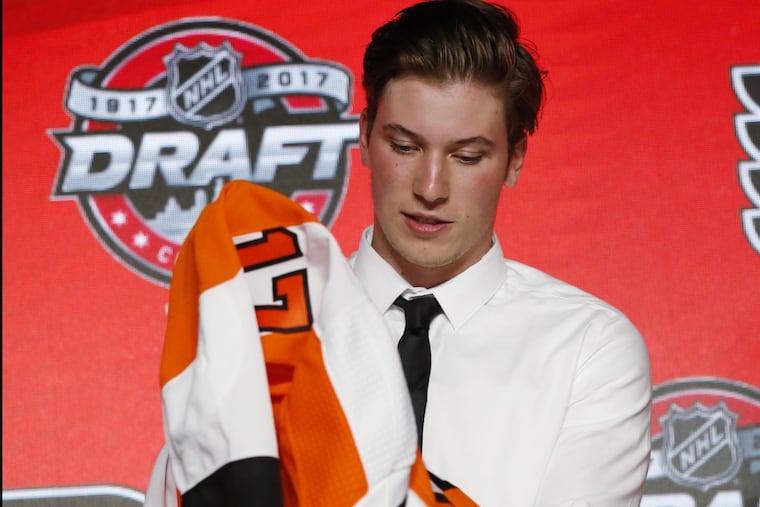Flyers pick Nolan Patrick's past is as much about bluebloods as it is red flags
A Bednarik-like grandpa, a Ripken-esque uncle, and his own dad's steady career provide some reassurance over Nolan Patrick's health.

Stop us if you've heard this before, but one of our local professional sports franchises just used a coveted top-3 draft pick on an athlete who spent much of the previous season on the sidelines, crossing its fingers on the hope that a recurring injury history does not imply a recurring future one.
Like the Sixers when they used a third pick in 2014 to select Joel Embiid, the Flyers were in a low-risk, high-reward spot sitting at No. 2 in the NHL draft. Virtually every prospect expert placed both Nico Hischier and Nolan Patrick well above any other talent in the draft, which implies the Flyers would have taken an even greater risk had they passed on the oft-injured Patrick after the Devils selected the smaller but healthier Hischier with the No. 1 overall.
Like Embiid in 2014, Patrick was everyone's No. 1 pick until a season-ending injury with a reputation for recurrence sidelined him for most of his draft year. For Patrick, a second sports hernia injury within a six-month period came two seasons after an upper body injury had curtailed participation in his first WHL season, and three seasons after a shoulder injury had shut him down as a Midget as well.
Still just 18, Patrick is the kind of player who puts this city — and most others — on edge, especially in the early going. Are his injuries the offshoot of a heavy load being placed on a developing body? Or is there a genetic code there that should make us all wary?
Let's go way back. He is a third-generation professional athlete. His grandfather, Stephen Patrick, was a two-way player with the CFL Winnipeg Blue Bombers for 13 seasons from 1952 through 1964, competing in six Grey Cup championships as a guard/tackle, winning four of them, and playing in 14 or more of a possible 16 games in 10 of those seasons.
Take that, Chuck Bednarik.
No injury problems there.
[Steve Mason to the Winnipeg Jets? Maybe, but maybe not.]
James Patrick, Steven's brother and Nolan's uncle, was the New York Rangers' first-round pick in 1981 (ninth overall). A stalwart defenseman for the New York Rangers for 10 seasons, he played in a total of 1,280 games, and finished plus-104 over a career that extended 21 years. Like his Ukrainian father and Nolan's grandfather, he also was a Cal Ripken-esque iron man, averaging more than 70 games in his first 10 professional seasons, including two plus-90-game seasons when the Rangers made long playoff runs.
Like Nolan, he stood 6-2, and weighed 200 pounds.
So the genetic code does not seem to be relevant here. Or it works in Nolan Patrick's favor. As for the recurring sports hernia, well, the biggest issue there historically, as Patrick has already discovered, is not giving it ample time to heal.
Not all sports hernias require surgery. And they're not easy to diagnose. Problems often amplify when a competitive athlete, particularly one under a spotlight, tries either to play through it or to come back too quickly. Patrick's sports hernia was actually one injury, suffered on both sides of his groin, but only the right one was initially diagnosed and treated. Once he resumed play, the left side shut him down again.
That's why, rather than act as a red flag, Patrick's light workload last season might work in his favor when training camp begins in two months. "I think it makes me stronger as a player,'' the 18-year-old-seemingly-going-on-30 said on draft night. "And adversity at this age doesn't hurt.''
Once, of course, it stops actually hurting.